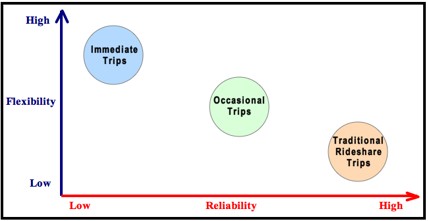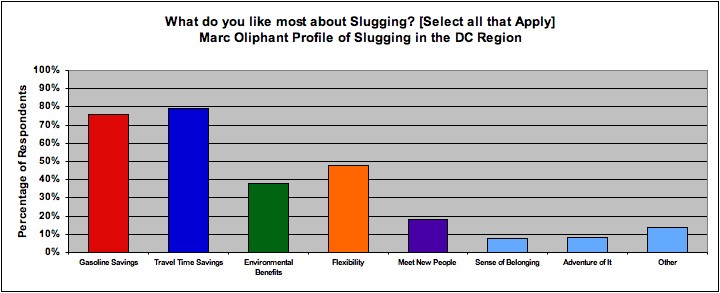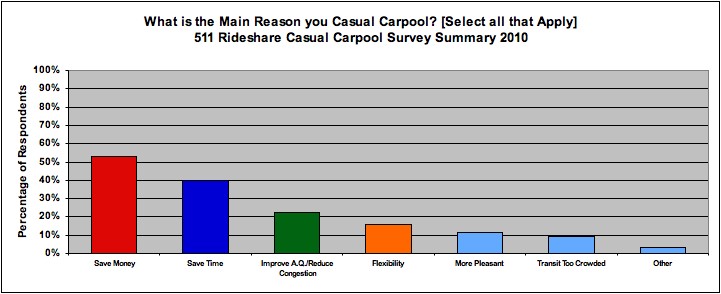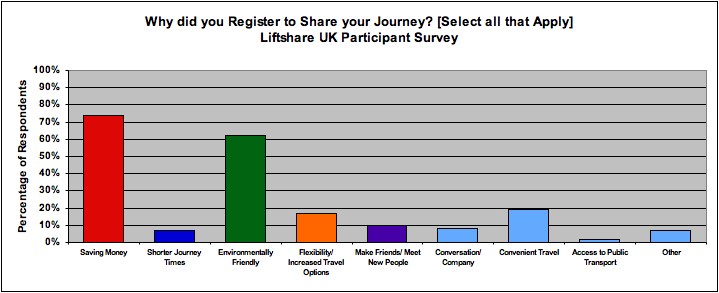
However, it is important to note that in existing, successful rideshare schemes, flexibility is often ranked as less important than economic benefits such as transportation cost savings (gasoline, parking) and travel time savings. In recent surveys of successful, self-organized rideshare services in Washington DC and San Francisco, flexibility ranks 3rd and 4th, respectively, in terms of importance to participants. In a 2008 survey of pre-arranged shared rides in the UK, flexibility remained the third most important consideration behind cost savings and environmental benefits. With this in mind, one must ask whether “real-time” service innovations alone are sufficient to increase participation? The research team’s belief is that improvements in rideshare services, namely “real-time” innovations, need to be paired with financial and/or convenience incentives in order to successfully attract new participants. “Real-time” rideshare trials in a variety of locations, with a variety of incentive packages will begin to provide more information on the relative value of “real-time” services.


